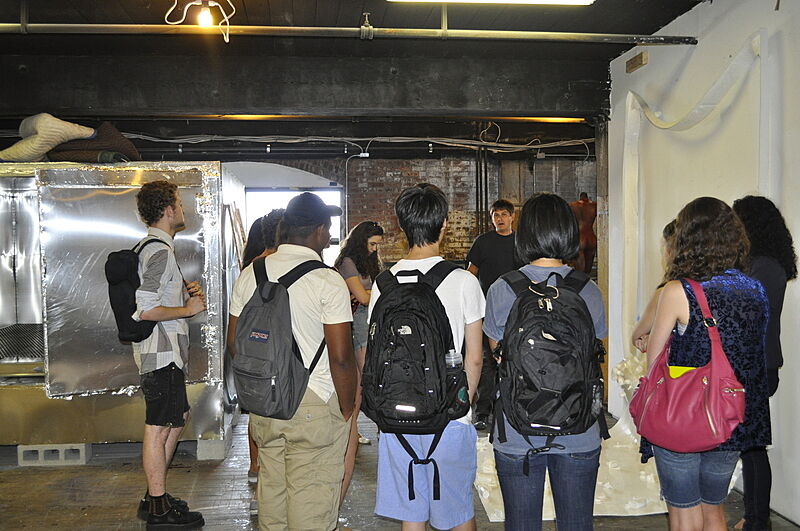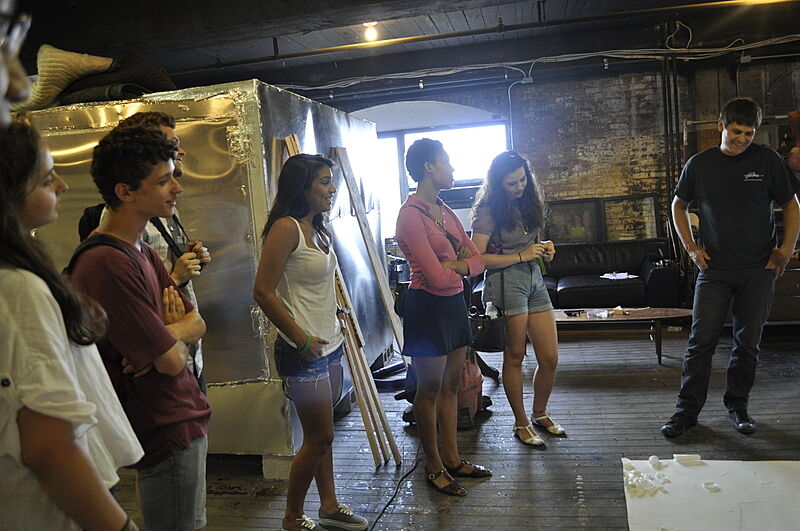YI Visits Alex Hubbard’s Studio
Jul 15, 2012
On July 10, teens in the Summer Intensive program visited artist Alex Hubbard’s studio in Greenpoint, Brooklyn. Hubbard is from Toledo, Oregon. He exhibited his work in the 2010 Whitney Biennial and has had several other solo exhibitions across the United States in the past few years. Hubbard experiments with sculpture, painting, film, and performance art. He is known for taking found objects (things people would label as garbage or junk) and reinventing them as new art pieces, imaginatively seeing their potential for beauty. In one video, shown at the 2010 Biennial, Hubbard is seen painting different sections of an old car and placing different objects on or around the car. The car is then driven around a parking lot and the whole process is continuously filmed. In another video, three different actions (filmed separately) are layered on top of each other. The actions include filling cups of coffee and stacking them, painting a large stencil, and creating a large metal structure. The semi-planned actions all end one by one, culminating in a final image. These works are prime examples of his use of found objects and simple actions in a type of performance art.
Hubbard showed us his workspace and we walked through an extensive process that he uses to create a new set of sculptural pieces. First, he pulled out massive ‘paintings’, which had many colorful plastic objects—ranging from empty bottles to other everyday consumer products—protruding from the smooth black surface; which almost looked like tar or black water. Hubbard told us that he had collected the objects from beaches in Morocco and the Dominican Republic. He got the idea for these works while walking along the beach in Morocco, noticing the beauty in the shapes and color palettes of the discarded objects. Although these ceiling-high pieces were shown in their own exhibition as finished works, Hubbard decided to create other pieces stemming from the immense slabs. He created white plastic replicas of the ‘paintings’ by making a mold of their surface and pouring a liquid plastic into the mold. He then took these replicas, with the distinct outlines of the objects clearly visible in the surface, and heated them up to 200 degrees to make them pliable. In order to heat the large replicas, he had to construct a massive oven, which stood in the corner of his studio. Hubbard regarded the oven as an overly ambitious project of which he was quite proud. Once the replicas were heated up, he was able to bend them into any shape he wanted, creating sculptural pieces of the original ‘paintings.’ The shapes of the sculptures were pre-planned with small models made of metal. Once folded and twisted into the desired shape, Hubbard has the freedom to paint the sculptures any way he wishes. The extensive and fascinating process was a treat to experience.
By Emiliano


